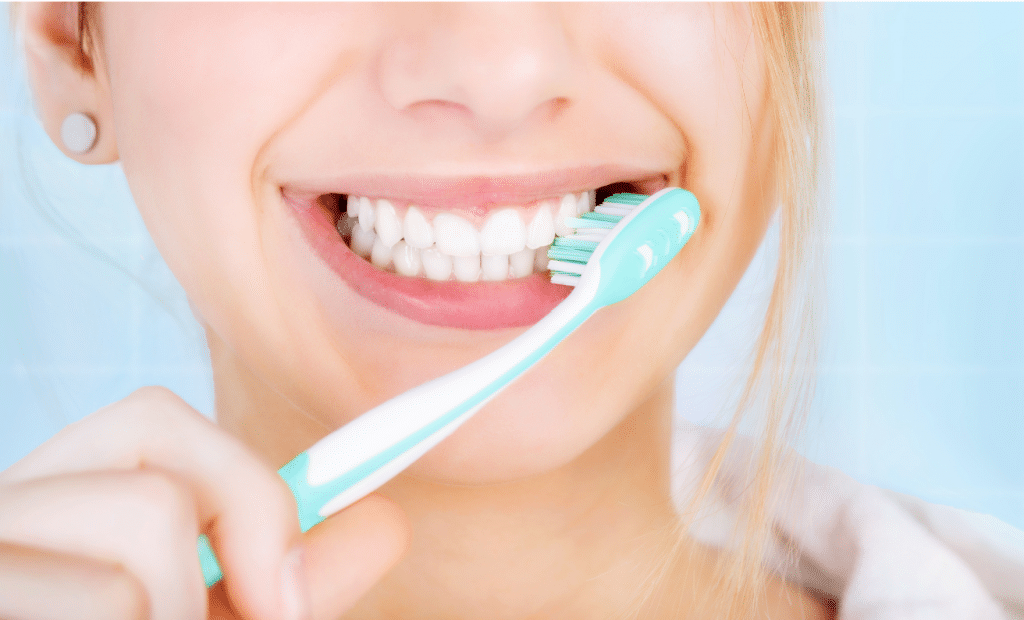
Why Do my Gums Bleed When I Brush My Teeth
Got Bloody Toothbrush Blues? Reasons Your Gums Bleed With Brushing
Seeing spots or streaks of red in the sink after brushing is alarming. Bleeding gums can feel disturbing and look quite dramatic. But before you panic, understand that minor bleeding after brushing is usually not a major cause for concern. There are several common reasons gums can ooze when you brush. Why do my gums bleed when I brush my teeth? Read on to learn why it happens and how to improve your oral hygiene habits to keep your toothbrush blood-free.
Causes of Bleeding Gums With Brushing
Gingivitis
Why do my gums bleed when I brush my teeth? The most common cause of bleeding gums is gingivitis, a mild form of gum inflammation caused by plaque buildup. When plaque sits on teeth along the gumline, it irritates the gums and causes them to become swollen, tender and prone to bleed when disturbed.
Gingivitis is quite common, affecting 60% of adolescents and 90% of adults to some degree. Telltale signs are red, puffy gums that bleed easily during regular brushing and flossing. The good news is gingivitis usually resolves once daily oral hygiene habits are improved.
Aggressive Brushing
Too much enthusiasm with your toothbrush can lead to scrubbing and damaging delicate gum tissues. Using a stiff-bristled brush and brushing violently erodes gum protection. This allows bleeding when the compromised gum area is disturbed.
Easing up on brushing pressure is key. Use gentle circular motions concentrating on the tooth surfaces. Let the bristles do the work – no need to apply brute force. A soft-bristled brush further minimizes gum irritation.
Hormonal Changes
Hormone fluctuations during puberty, menstruation and pregnancy can increase gum sensitivity and lead to bleeding when brushing. Teens may notice gums bleed more during their hormonal changes. Women may experience bleeding gums during menstruation or while pregnant.
Being consistent with gentle daily brushing and flossing helps keep gum inflammation at bay during hormonal phases. Using pregnancy-safe oral care products minimizes bleeding risks for expectant mothers.
Blood Thinning Medications
Some prescription drugs like blood thinners, heart medications, antidepressants and immune-suppressing drugs can thin the blood and inhibit clotting. People on these medications may notice increased gum bleeding since blood takes longer to form clots and stop oozing.
Let your dentist know about any medications you take to understand risks and get personalized home care tips to minimize bleeding. Avoid aspirin and anti-inflammatory drugs as they also thin the blood.
Nutrient Deficiencies
Why do my gums bleed when I brush my teeth? Diets deficient in vitamin C and other nutrients vital for healthy gums and tissue repair can make gums prone to bleeding. Citrus fruits, broccoli, peppers and tomatoes help boost vitamin C intake and build collagen-rich gum tissue.
Other vitamin and mineral deficiencies linked to bleeding gums include iron, folate, calcium, zinc and vitamins D and K. Having bloodwork done can identify any nutritional gaps to address.
Gum Disease
Inflamed, bleeding gums may progress to full-blown gum disease called gingivitis. This occurs when plaque spreads infection deeper below the gumline and destroys the tissues holding teeth in place. Untreated gum disease causes chronic bad breath, tender gums, and eventual tooth loss.
See a dentist immediately if your gums are chronically inflamed or bleed profusely when brushing. You may need deep cleanings and antibiotics to clear up infection and restore gum health. Catching gum disease early is key to preventing permanent bone and tooth damage.
When to Worry About Bleeding Gums
Though usually harmless, contact your dentist if you notice:
- Frequent bleeding – Gums bleed almost every time you brush and floss over a prolonged period.
- Excessive bleeding – Bleeding seems heavier than spotted streaks. It flows steadily even after brushing gently.
- Spontaneous bleeding – Gums bleed on their own without any irritation.
- Persistent bad breath – Bad breath persists even with good oral hygiene.
- Loose teeth – Teeth feel looser in their sockets or shift positions.
- Receding gums – Gums appear pulled away from teeth, exposing sensitive roots.
- Pus – Yellow or white discharge oozes from between teeth and gums.
Any of these accompanying symptoms along with bleeding signal it’s time to get a professional dental exam. Make an appointment right away to diagnose and resolve the underlying issue promptly.

Improving Brushing Habits to Prevent Bleeding
While often harmless, even minor bleeding indicates room for improvement in your oral care routine. Here are some easy steps to ensure you brush properly and avoid irritating gums:
- Use ultra-soft bristles – Firm brushes abrasively wear down gum protection. Choose an extra-soft bristled toothbrush.
- Apply minimal pressure – Gently move the brush using light wrist motion. Let bristles glide lightly along gumlines instead of scrubbing hard.
- Brush properly – Angle brush bristles 45-degrees towards gumline. Use short strokes brushing each area 4-5 seconds. Don’t saw back and forth.
- Choose a small-headed brush – Compact brush heads maneuver well and prevent over-scrubbing of gums.
- Upgrade technique – Adopt the BASS brushing method recommended by dentists. BASS stands for Angle bristles 45-degrees, Softly sweep along gumlines, Short strokes on each tooth surface.
- Be thorough but gentle – Take time to brush all areas thoroughly but with a delicate touch. Set a timer for 2 minutes.
- Use sensitivity toothpaste – Formulas for sensitive teeth strengthen enamel and soothe gums.
- Floss once daily – Flossing removes plaque buildup below the gumline and between teeth where brushing can’t reach.
- Don’t brush right after eating – Wait 30-60 minutes after acidic foods and beverages. Enamel is in a weakened state and gums are sensitized directly after eating.
- Visit your dentist routinely – Regular cleanings allow pros to remove plaque buildup you can’t reach and detect any developing gum issues.
With the right tools and techniques, you can brush properly without aggravating delicate gum tissues. Healthy pink gums shouldn’t bleed at the slightest provocation. Banishing bleeding means you’re on the right oral care track.

When to See a Dentist for Bleeding Gums
Make an appointment with your dentist if:
- You bleed consistently even brushing extremely gently. Chronic bleeding indicates a problem needs addressing.
- Your gums appear very red, swollen or irritated. There may be infection or trauma needing treatment.
- You experience severe pain along with bleeding. Extreme sensitivity may signify advanced gum disease.
- You have risk factors like smoking, diabetes or osteoporosis. These increase vulnerability to gum problems.
- You take medications causing excessive bleeding due to blood thinning. Alternatives may be available.
- You notice sudden bleeding after a period of normal gums. Something may have changed or become damaged.
While mostly innocuous, bleeding gums shouldn’t be ignored. A dental expert can properly diagnose the cause and provide solutions tailored to your unique oral health needs. Don’t wait with concerns – take steps to get your gums happy and healthy again!
Keep Your Toothbrush Blood-Free
Seeing blood in the sink or on your toothbrush is jarring, but try not to catastrophize. In most cases, minor bleeding just signals a need for gentler oral care habits. Analyze your brushing technique and upgrade tools like brush softness. Rule out any nutritional deficiencies. And make a routine dentist appointment to get ahead of any gum issues before they progress.
With some simple adjustments, those bleeding gums can be returned to a healthy, resilient pink hue. Be proactive by identifying the reasons for bleeding when you brush. A few easy changes will have you brushing with confidence – and without the bloody toothbrush blues.



